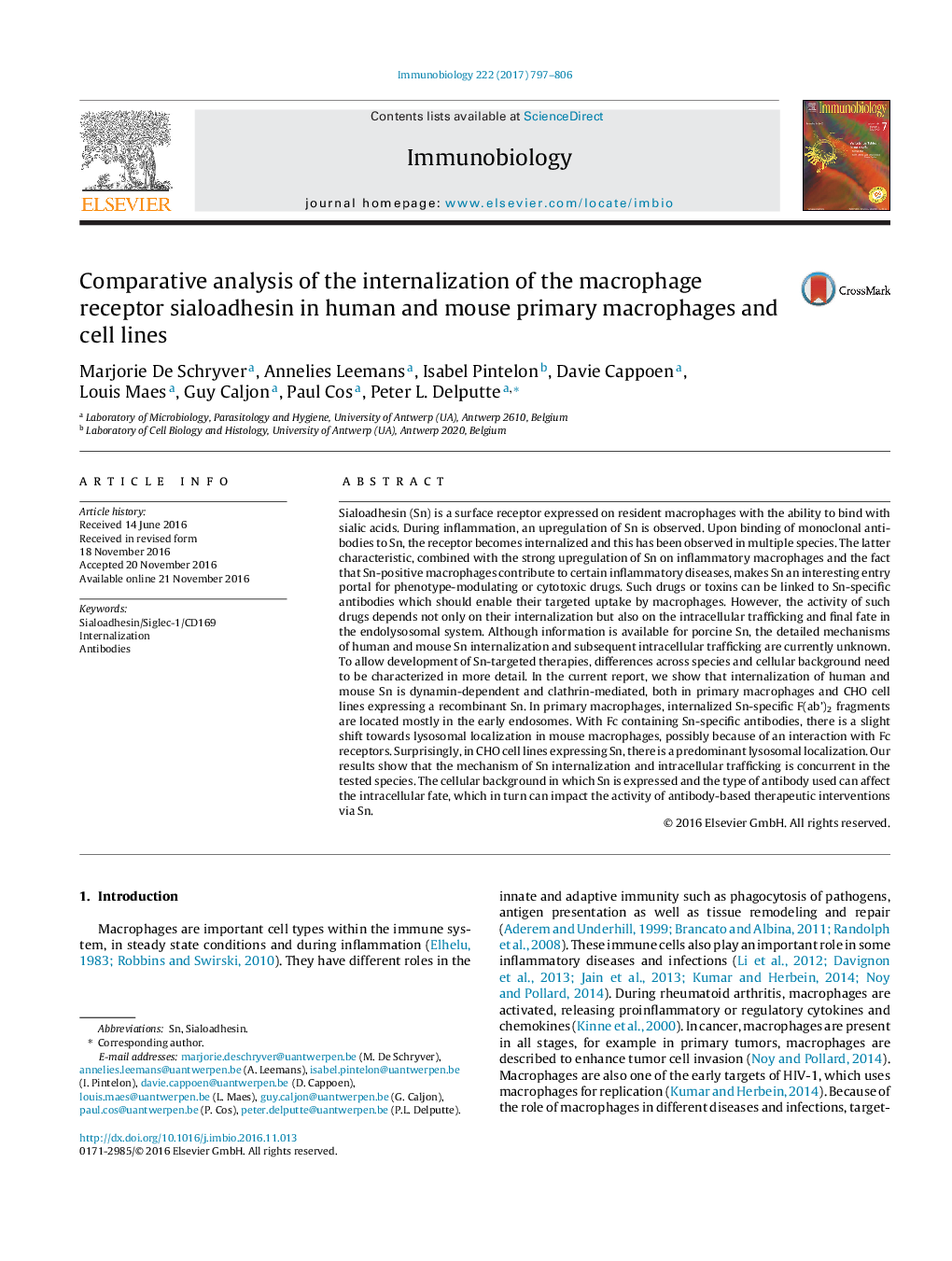| کد مقاله | کد نشریه | سال انتشار | مقاله انگلیسی | نسخه تمام متن |
|---|---|---|---|---|
| 5532983 | 1402092 | 2017 | 10 صفحه PDF | دانلود رایگان |
Sialoadhesin (Sn) is a surface receptor expressed on resident macrophages with the ability to bind with sialic acids. During inflammation, an upregulation of Sn is observed. Upon binding of monoclonal antibodies to Sn, the receptor becomes internalized and this has been observed in multiple species. The latter characteristic, combined with the strong upregulation of Sn on inflammatory macrophages and the fact that Sn-positive macrophages contribute to certain inflammatory diseases, makes Sn an interesting entry portal for phenotype-modulating or cytotoxic drugs. Such drugs or toxins can be linked to Sn-specific antibodies which should enable their targeted uptake by macrophages. However, the activity of such drugs depends not only on their internalization but also on the intracellular trafficking and final fate in the endolysosomal system. Although information is available for porcine Sn, the detailed mechanisms of human and mouse Sn internalization and subsequent intracellular trafficking are currently unknown. To allow development of Sn-targeted therapies, differences across species and cellular background need to be characterized in more detail. In the current report, we show that internalization of human and mouse Sn is dynamin-dependent and clathrin-mediated, both in primary macrophages and CHO cell lines expressing a recombinant Sn. In primary macrophages, internalized Sn-specific F(ab')2 fragments are located mostly in the early endosomes. With Fc containing Sn-specific antibodies, there is a slight shift towards lysosomal localization in mouse macrophages, possibly because of an interaction with Fc receptors. Surprisingly, in CHO cell lines expressing Sn, there is a predominant lysosomal localization. Our results show that the mechanism of Sn internalization and intracellular trafficking is concurrent in the tested species. The cellular background in which Sn is expressed and the type of antibody used can affect the intracellular fate, which in turn can impact the activity of antibody-based therapeutic interventions via Sn.
Journal: Immunobiology - Volume 222, Issue 6, June 2017, Pages 797-806
